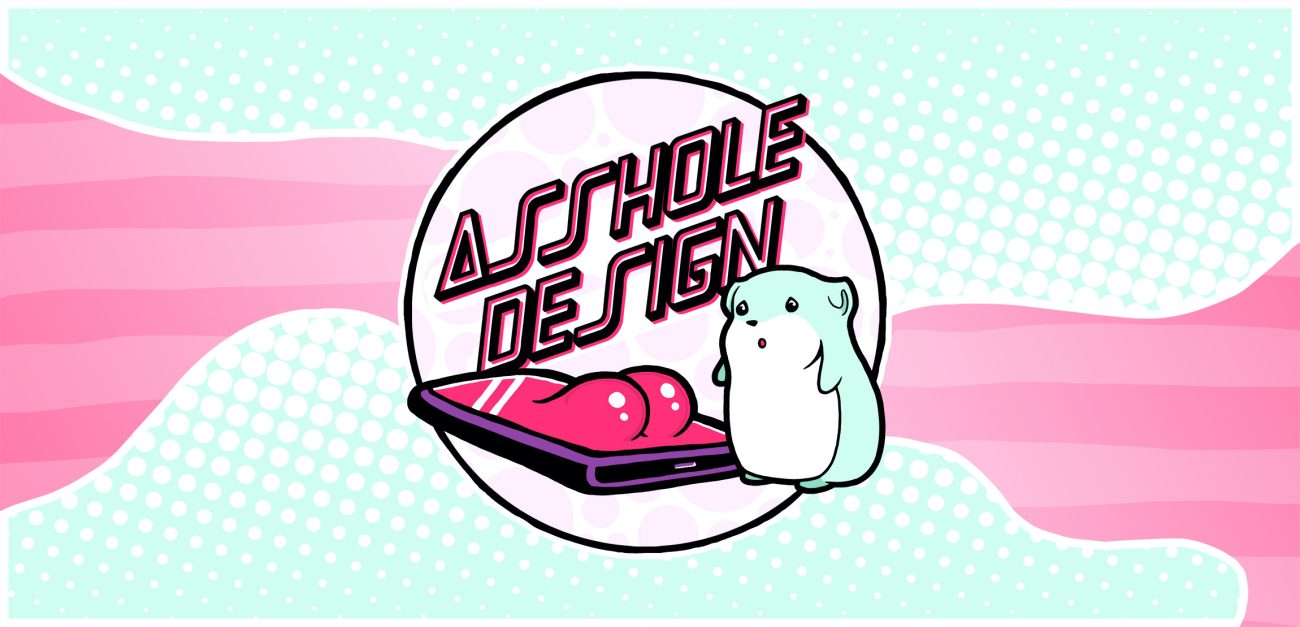
Are you using or creating asshole design? Dark patterns benefit no one.
Dark Patterns. We’ve all seen them, we all hate them. Most likely you’ve all been tricked by them and left wondering why you’re being billed for something you can’t recall ordering.
Dark Patterns. We’ve all seen them, we all hate them. Most likely you’ve all been tricked by them and left wondering why you’re being billed for something you can’t recall ordering.
Before we get into this, what are dark patterns?
Dark patterns are, in short, design patterns that make the user do something that the service provider wants but the user doesn’t. These patterns can also stop the user from doing something that wouldn’t look good on the service providers stats. We use well-established patterns to help users complete tasks, but this is the opposite. Hence the term “Dark Patterns”.
One place I often stumble upon dark patterns is when trying to delete my account from whichever service. Signing up can normally be done half by accident, while deleting the account is near impossible.
Let’s say we want to stop user accounts from decreasing – make them impossible to delete! Done. Great job! Now you can show the new metrics to stakeholders and have a cold glass of bubbly, like a true hero. As if those angry users are doing any good for you in the long run.
A good piece by Flavio Lamenza proposes that we should all stop calling it dark pattern design and instead call it what it is: Asshole design. After all, it aims to trick users into doing things that we already know they wouldn’t want to, and calling it dark pattern design is only giving it an air of respectability it does not deserve.
Case Instagram – thanks for nothing
Instagram has thankfully blessed this blog post with the perfect example of what I’m talking about. The internet recently exploded after Instagram decided to do some UI changes, which are right on the money for this post. So what did they do?
Well, they just moved some buttons around. First the “Add” button. You know, the one you press for adding content to your Instagram account? They moved it all the way to the top right corner. Reaching it with your thumb? Yeah, keep dreaming. It was replaced with Reels. In case you’re wondering what those are, they’re videos, only different.
Anyway, as if that wasn’t enough they also took the “Likes” tab, where you can find your likes and followers, and moved it up to the same distant corner where the other core functions go to die. Instead we got SHOPPING. That’s right, shopping.
So now hordes of users will be pressing Reels and shopping out of instinct, and boy does that make for a good presentation for stakeholders. Just look at the numbers! People love Reels!
Designers of the World, unite!
As designers, we have a certain responsibility to make services better and nicer to use, so we should be very careful about trickery like this. It seems dark patterns usually happen out of desperation or some other completely arbitrary reason.
We should stand our ground against this. If you need to resort to trickery for your business to succeed, you should probably sit down and consider calling it quits and doing something worthwhile instead. If you offer a good service or sell a good product, you won’t need tricks to succeed.
If you need to trick users, they probably hate you already and you have to go to sleep every night knowing you’re contributing absolutely zero to a world that’s already drowning in bullshit.
5 signs you’re on it
The best place to learn about dark patterns is https://www.darkpatterns.org/. You can find excellent examples of all sorts of dark patterns there, complete with screenshots of actual cases.
And if you’re not sure if it’s asshole design or not, here’s a checklist.
- You hate it
- It makes you accidentally buy shit
- It makes you accidentally sign up for something
- You click a wrong button by reflex, then feel like an idiot
- You end up crying
If you’re ever asked to design stuff like this, say no. You’re a designer, not an asshole.
Illustration: Joel Pöllänen



